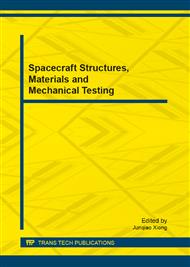p.71
p.79
p.85
p.91
p.97
p.107
p.115
p.121
p.127
Study on Control of the Rotational Speed of Diesel Engine under State-Switch Mode in Parallel Hybrid Hydraulic Excavator
Abstract:
In parallel hybrid hydraulic excavator (PHHE) with super capacitor, the throttle position of the diesel engine is changed with the variation of the capacitor’s state of charge (SOC) of the super capacitor. When the throttle position is switched, the rotational speed of the diesel engine cannot be able to increase or decrease to the target speed rapidly enough, and it may fluctuate in large range under given conditions. Under the assumption that the loading torque of the diesel engine is invariant at the switch instant, the response of the rotational speed appears to be in different forms, which are not admitted for the normal work of PHHE. In this paper, switch types are divided into eight state-switch modes, in terms of the loading type and the amplitude of variation of the throttle position. And the paper mainly aims to the smooth transition of the rotational speed during the switched process of PHHE by the dynamic compensation of the electric motor. Experimental results show that the dynamic compensation of the electric motor can improve the dynamic behavior when PHHE is under state-switch modes.
Info:
Periodical:
Pages:
97-106
Citation:
Online since:
February 2013
Authors:
Price:
Сopyright:
© 2013 Trans Tech Publications Ltd. All Rights Reserved
Share:
Citation:


